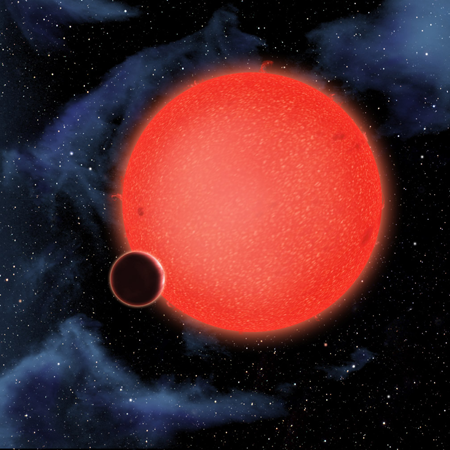Astronomers Discover New Class of Exoplanet: The Waterworld. Space Fist-Pump.

The Kepler mission has kept us space zealots in writhing moments of euphoria for a while now, but this one is a doozy. Courtesy of its All-Seeing-Eye (listen that’s how I imagine it, okay) they’ve discovered a new class of exoplanet: the waterworld. Insert easy jokes.
io9:
NASA’s Kepler mission has been spoiling us with planetary discoveries left and right as of late. Now, researchers using NASA’s Hubble Space Telescope have discovered an entirely new class of planet – they call it a “waterworld,” and it might be covered in broiling-hot ice.
Illustration viaIn our own solar system, you’ll find three main types of planet: terrestrial (Mercury, Venus, Earch, Mars); gas giants (Jupiter, Saturn); and ice giants (Uranus and Neptune).
Journey out into the rest of our galaxy, and you’ll encounter a handful of other categories. But now, observations made by Hubble have revealed a planet just forty light years away that bucks established norms like a surly but otherwise virtuous character in… well, more than one Kevin Costner film, really… but especially in Waterworld. Which is fitting. Because scientists say the extrasolar planet – dubbed “GJ1214b – represents a brand new classification of planet: a veritable world of H2O, encased within a thick atmosphere of water vapor.
“GJ1214b is like no planet we know of,” explained astronomer Zachory Berta, who led the team that revealed the exoplanet’s secret. “A huge fraction of its mass is made up of water.”
“Based on our observations, this atmosphere would likely consist of more than 50% water by mass,” write the researchers in the paper describing their findings. These measurements, say the researchers, restrict the potential composition and structure of the rest of the planet, which they conclude must contain “a substantial fraction of water” throughout its interior.
How substantial of a fraction are we talking? GJ1214b’s density is close to just 1.9 grams per cubic centimeter. Water has a density of 1 g/cm3. The fact that Earth’s average density is 5.5 g/cm3 suggests that GJ1214b is harboring a lot more water than Earth – and much less rock.
But despite its hydrous nature, GJ1214b would still be inhospitable to human life, due primarily to the fact that its proximity to its sun gives it an estimated surface temperature in excess of 230 degrees Celsius. “The high temperatures and high pressures would form exotic materials like ‘hot ice’ or ‘superfluid water.'” explained Berta, “substances that are completely alien to our everyday experience.”
Superfluid water? Hot ice? This all sounds so outstanding. Loving it.



